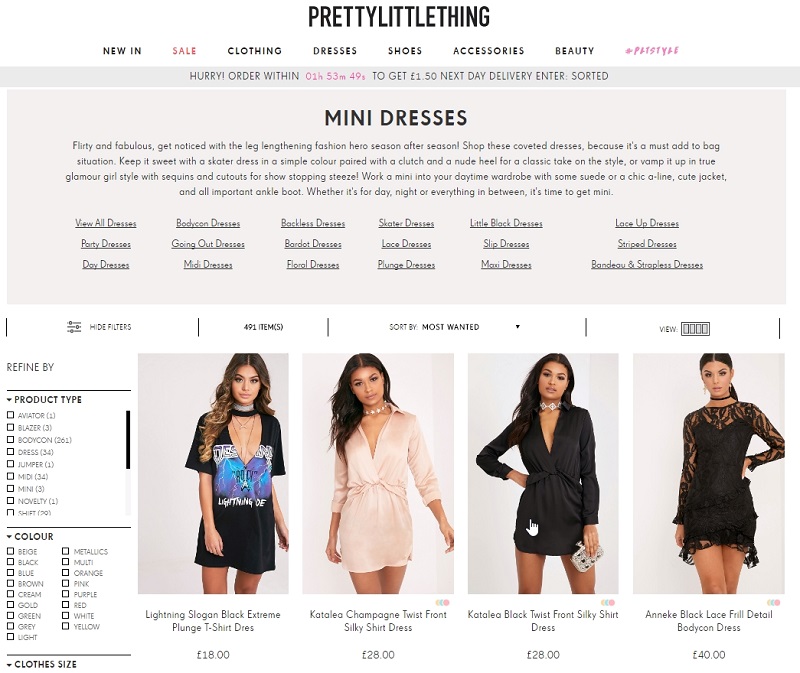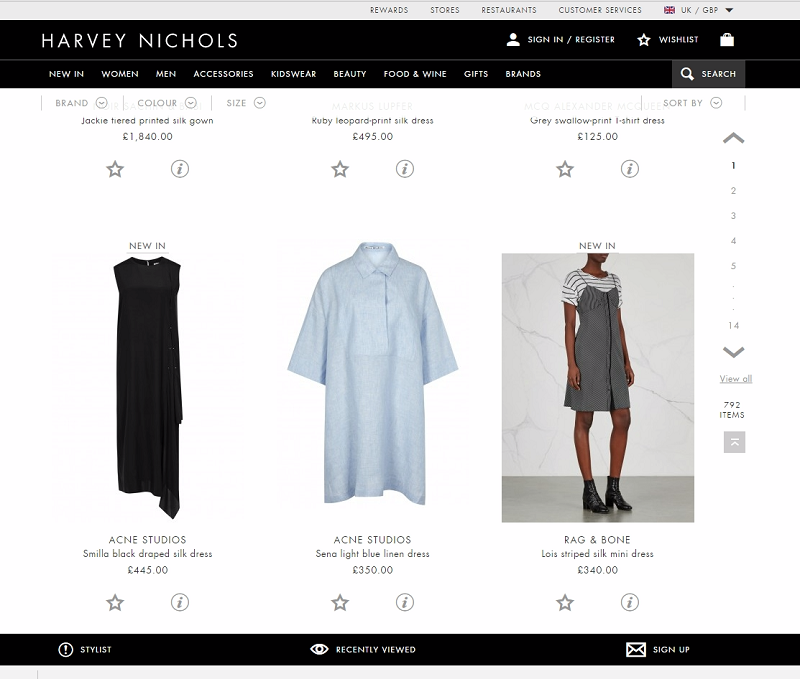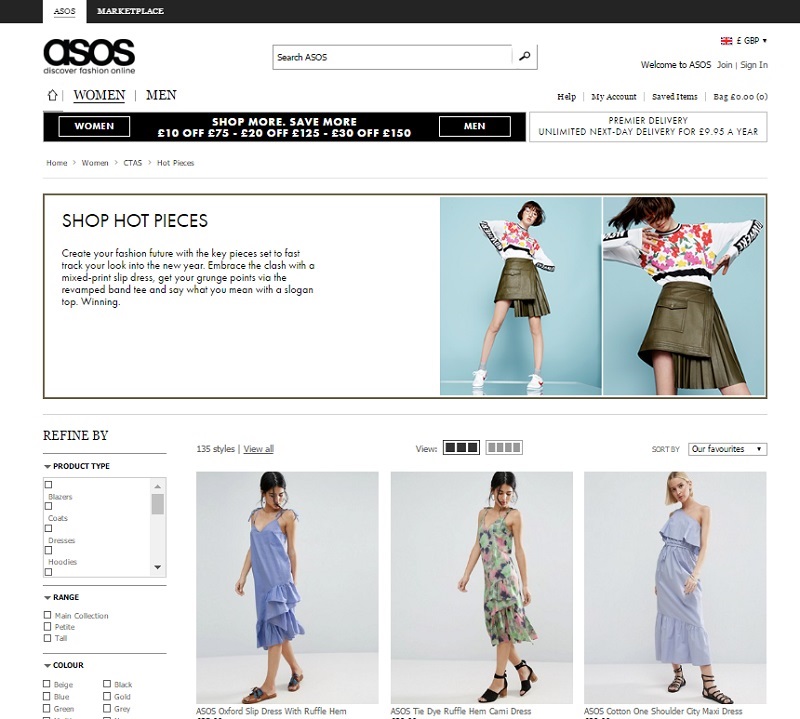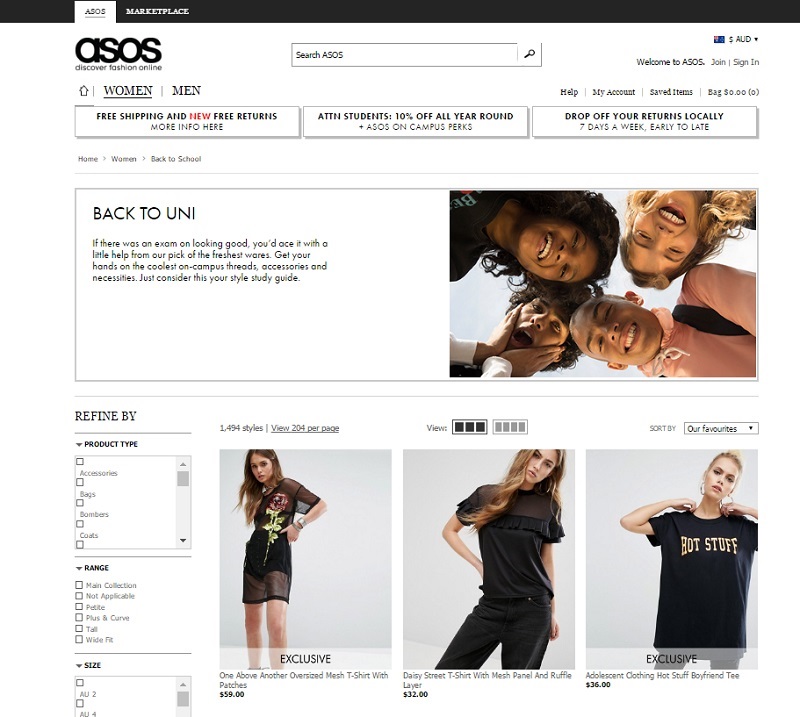While automation is essential for efficient online merchandising, retailers also need the ability to manually curate the look and the feel of their website in response to trends and sales data if they want to attract shoppers. James Wilson, Senior Consultant at Fredhopper, offer six key tips on using all data points retailers have at their disposal to optimise a site’s trading ability without compromising on the aesthetics of a beautiful listings page, and ensure online merchandising is as slick and effective as instore.
While automation is essential for efficient online visual merchandising of thousands of products, retailers also need the ability to manually curate the look and the feel of their website in response to trends and sales data if they want to attract shoppers.
The question is how can retailers make sure they are exposing their products to customers effectively? It’s no longer simply about placing bestsellers or ‘New In’ at the top of the page. This is where manual visual merchandising comes in, because rules or algorithms struggle to make similar decisions or choices that a human would make.
In today’s online retailing landscape you can’t yet programme software to factor in aesthetics and it can be hard to express your ‘brand ethic’ in a way a computer can understand. Would an algorithm know to position similar brands of the same price point next to each other, or not place images of models inappropriately across a page, seemingly staring at the chest of another?
Would it know to place a bikini top above the matching bottoms? How about automatically pushing a product worn by a celebrity who has just posted a photo on Instagram?
Retailers can use all data points they have at their disposal to optimise a site’s trading ability without compromising on the aesthetics of a beautiful listings page, and ensure online merchandising is as slick and effective as in-store.
Mindful merchandising matters
Retailers often employ up to half a dozen people whose job is solely to manage product merchandising. They tend to focus on high-level metrics such as sales, page views and conversion rate of products across the entire site and don’t always consider how these products perform within each of the categories they reside. For example, a mini dress could feature in a variety of categories, such as ‘New In’, ‘Dresses’, ‘Trends’, ‘Recommendations’, ‘Sale’ and so on. The retailer needs to focus in on which category is best driving sales of this product and adjust its positioning accordingly.

It is obviously not feasible or sustainable for retailers to manually move every product around. Best practice is to manually position products on the top one to two pages of the highest traffic and revenue-generating categories. The long tail and lower revenue-generating categories can then be left to rules.

Fashion retailer PrettyLittleThing organises its mini dresses in different categories according to product performance. The image above shows the top row from ‘New In Dresses’, and below is the top row from the main ‘Mini Dresses’ category. This approach to visual merchandising can reduce search costs by helping to show the breadth of a product catalogue too.
Similarly, when searching for a generic term such as ‘dress’, a page can show different product types. Here, Harvey Nichols presents a row of maxi and midi dresses of various brands in the same price bracket. It also wisely avoids complete rows of the same colour, which our research shows users find less engaging. Instead, the retailer focuses on a colour palette, such as pastels, so products are similar but there is enough variation to break up each row.

Size me up
One of the most frustrating experiences for a customer is to find a product they like, only to go through to the detail page to complete a purchase and find out it’s not available in their size. This is common when shopping online, and is often caused by retailers pushing products where stock is abundant.
However, few retailers look at how stock is distributed across the different sizes when applying their merchandising strategies. Stock-size fragmentation is a crucial consideration and retailers need to be careful to only promote available stock in order to avoid customer disappointment.
Be aware of global seasonality
Retailers running international sites must merchandise these separately as well as applying global strategies. Australia is a complete season behind Europe and the US, so while ASOS is currently promoting spring wear in the UK, it makes no sense to do this in Australia where customers will be more interested in autumn and ‘Back to Uni’ products.


Manage ‘back in stock’ manually
While promoting new products is often straightforward, as the stock carries a traceable ‘created date’ allocated when it arrives in the warehouse, retailers often aren’t sure when it comes to merchandising ‘back in stock’ items.
As the product is one they have sold before, it doesn’t have the obvious newness factor and retailers can then struggle to surface it high enough on pages if just relying on automation. Thoughtful manual positioning of items avoids this problem. For example, by ensuring products are included on pages with the highest traffic.
Bolster bestsellers
Retailers naturally like to promote popular products. Popularity can be defined by a number of different metrics including unit sales, revenue sales, page views and social media likes and shares. However, the challenge with pushing bestsellers is that you can inadvertently elevate those basic products that everyone buys in addition to their main purchase, such as plain t-shirts and socks, to the top page slots, as they are purchased so much more than any other products.
Retailers need to avoid this pitfall by manually adjusting the automated algorithm set-up and picking a narrow timeframe for popularity – each page needs to remain fresh anyway. Another option is to exclude basic products or push them to the bottom to ensure the truly on-trend bestsellers can be easily found.
It’s personal
Personalisation is a fragmented idea. It’s different for every retailer, and every retailer needs to decide what it means to them and their customers. Some retailers need to personalise according to individual users. For others, segmentation is enough. Retailers should expect to make small, incremental changes and measure them to see what works best for their target group in the long run.
Personalisation has the potential to improve the customer experience and increase conversion. It should be an integral aspect of a retailer’s online visual merchandising strategy. Traditionally, retailers arrange products row by row, with an own brand row followed by a brand row, and so on. Imagine that the users’ preferred brand, based on previous purchases on on-site behaviour, was inserted instead of rows being picked by the merchandising team. These rows would be different for each user and would expose specific brands to the users most interested in their products, while still adhering to the underlying master merchandising strategy of the site.
Creating the ultimate shopping trip
Merchandising online is far removed from the store experience, when a customer can use all five senses, so retailers need to be more creative.
Good merchandising choices lead to higher conversion rates, bigger orders and overall sales revenue. Retail merchandisers should spend most of their time reviewing analytics to help them understand customer needs. Regularly implementing these adjustments should be simple and not time-consuming.
Telling your brand’s story and guiding the customer clearly through product ranges, while influencing and enhancing individual experiences, creates the ultimate online shopping trip.
By James Wilson
Senior Consultant
Fredhopper

